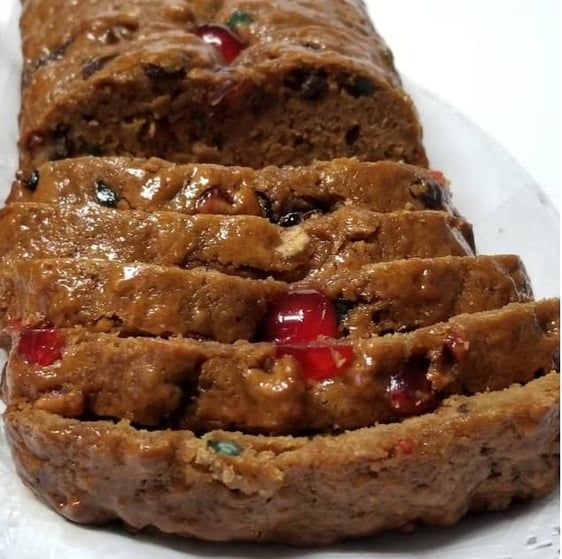News

For someone who can't eat gluten, I've spent a great deal of time pondering the cupcake. Recently, I ordered several dozen mini cupcakes to celebrate my kids' upcoming birthday. Yes, that's right. The dietitian mother who begrudged her children—and yours—Halloween candy this year will be doling out mini cupcakes to a dozen toddlers and their parents later this month. Hypocrisy? Change of Heart? I don't think it's either, but read on, and I'll let you decide. For starters, I love cupcakes as much as the next person. I have nothing against cupcakes (though some versions exceed the optimal ratio of frosting to the cake, in my opinion). But cupcakes in 2012 are a different animal than the cupcakes of 1982. Think about these three important differences between today's cupcakes and those from 30 years ago, and you may see how the evolution of the cupcake symbolizes what's gone so terribly awry with our country's food culture. Cupcakes were once a special birthday treat. When I was growing up, kids brought cupcakes to class on their birthdays to celebrate the occasion. (Notably, these cupcakes were usually homemade, since you couldn't just walk down the block to your local cupcake boutique and pick up an assorted dozen like you can today. Hold onto this thought—we'll get back to it.) It's an elegant concept: cupcakes are a single unit, and each kid brought enough for everyone else to have just one. There were no bottomless doggie bags of cupcakes to bring home. When you finished your cupcake, you were done. For the birthday kid, any leftover cupcakes didn't hang around the house forever like, say, leftover Halloween candy from a giant trick-or-treat bag. They staled quickly. In these ways, birthday cupcakes were self-limiting. Nowadays, school districts nationwide are banning birthday cupcakes, usually as a highly-visible pillar of their strategy to combat childhood obesity. Geez, talk about throwing out the baby with the bathwater. If there's one time that is appropriate to eat cupcakes, it's a kid's birthday! This practice is how generations of children learned to control their portions of sweets and to understand the difference between special-occasion foods and everyday ones. Outside of schools, most American cities have one or more cupcake-only boutiques (my town of Jersey City, N.J., has two of them; New York City has dozens). Cupcakes are also sold at every major retail coffee shop and often in the cafés of mega-bookstores. In fact, I challenge you to make it through a typical day without encountering a cupcake. All these places wouldn't be selling all these cupcakes unless people were buying them. We bake cupcakes for birthday parties etc. but have collectively voted with our wallets that the appropriate occasions to eat cupcakes are: while shopping for books, whenever passing a cupcakery such that the wafting smell of butter beckons, and because today is Tuesday, and we've got the blues. The point here is that the sheer ubiquity of treats has morphed the concept of special-occasion foods into one of daily indulgences. We have lost the inherent understanding of the concept of moderation. Cupcakes were once cup-sized. Smaller, actually. If you've ever baked cupcakes at home, picture the size of the molds in the standard cupcake tray. Remember frosting their small tops, and how little frosting it actually took to cover them with a reasonably thick, flat layer? According to sources I consulted, the standard size of a cupcake made in such a mold would be 2 3/4 inches in diameter, which corresponds to a "small" (2.4 ounce) muffin or cupcake, according to the U.S. Department of Agriculture. Now, when was the last time you saw a cupcake this size for sale? The most popular cupcake in the country's leading retail cupcake shop, Crumbs, is 4 ¼ inches in diameter, and the vertical mound of frosting on its cap is far more generous than those we once frosted ourselves. No need to beat this horse to death; this is the "portion distortion" that has been well-documented by Lisa Young in her book, The Portion Teller, and Morgan Spurlock in his film, Supersize Me, among others. As portions of everything get bigger, our perception of normal sizes skews to keep up, and cupcakes lose their innocence somewhere along the way. Cupcakes were once an obviously indulgent foil to their frosting-less counterpart, the muffin. I mean, who would ever dream of having a cupcake for breakfast, right? Muffins, on the other hand, remain socially-acceptable breakfast fare. Some muffin varieties—like those with the words "bran," "carrot," "zucchini," or "blueberry" in their names—have even earned street cred as healthy choices. In our topsy-turvy world, however, it's possible—and even likely—that your garden-variety, store-bought muffin has more calories than your standard cupcake. That is correct: in many cases, you are likely to be better off eating a cupcake for breakfast than a muffin. Not that I am endorsing either choice, mind you. Your "average" muffin from, say, a leading chain of café-bakeries, is 5.5 ounces and has 511 calories; its average cupcake is 3 ounces and 356 calories. This example, which is not an outlier, illustrates a disturbing truth about eating in America today: We can no longer trust our own judgment as to which foods are healthy and which foods are not, so its impossible to make an informed decision at the point of sale. With food being consumed outside the home at historic highs, we are likely to routinely make errors in judgment. This is why I support posting calorie counts at retail foodservice establishments. I will now step down from my soapbox and end this rant with a parting thought: Eat one cupcake on your birthday. Eat one cupcake on each of your good friends' birthdays. If they're homemade cupcakes, even better. Enjoy the heck out of aforementioned cupcakes. And if an opportunity for cupcakes arises on a non-birthday occasion, repeat this mantra to yourself: "Hmm … That's strange. Nobody I know is celebrating a birthday today. Why on earth would I eat a cupcake?!?" Unless of course, it's breakfast, and your only other option is a muffin. Then perhaps you should consider the cupcake. Original article

Between 2021 and 2026, worldwide sales of gluten-free battery products will most likely see 11.9% growth. The dramatically evolving consumer perception of gluten consumption in routine diets predominantly drives the global gluten-free bakery products market. The increasing prevalence of gluten intolerance, as well as a growing number of cases of celiac disease, are likely to remain responsible for the gluten-friendly trend, in turn heightening the scope of growth for the gluten-free bakery products market. While the retail industry will continue to be the largest revenue contributor, Europe will remain the prime market, says a newly released report by Fairfield Market Research. The report estimates global gluten-free bakery products market revenue to jump from nearly US$3.3 Bn recorded in 2021 to over US$5.8 Bn by the end of 2026. Rising obesity cases remains a strong factor encouraging a sizeable consumer population to turn to healthier diet alternatives such as the gluten-friendly range. With more consumers seeking healthier dietary alternatives irrespective of any clinical reason, the growth of gluten-free bakery products market will continue to be on an uptrend, suggests the report. Key Research Insights Gluten-free bakery products market is likely to experience more than 1.7x expansion between 2021 and 2026 Biscuits and cookies remain the fastest growing market segment, estimated to rise at more than 13% CAGR through 2026 end Sales through supermarkets and hypermarkets dominant, likely to see around 10.4% growth by the end of forecast year Insights into Segmental Analysis Sales of dry and easy products that complement on-the-go consumption trend will remain on an upswing throughout the period of forecast. The report finds that among the key categories. i.e., breads, pizzas, biscuits, tortillas, cookies, cakes, muffins, and crackers, the gluten-free bakery products market will continue to see dominant sales of cookies, and biscuits. The segment is expected to exhibit a robust rate of growth in sales at over 13% during 2021 – 2026, projects the report. Frequent debuts of a range of flour alternatives in bakery will further complement this dominance. The report further attributes the same to widespread availability of gluten-free cookies and biscuits across retail, and the relatively competitive costs. On the other hand, with organic products recently gaining ground in the gluten-free space, will discover a significant incremental opportunity through the end of forecast year 2026. In terms of sales channel, retail will continue to provide the strongest fertile ground to global gluten-free bakery products market. With the boom around health foods growing denser, the supermarket/hypermarket segment in the market will possibly exhibit more than 10% CAGR through 2026 end. Key Report Highlights Rising popularity of organic products across F&B will push the organic segment to achieve a notable incremental opportunity worth US$859.5 Mn during 2021 – 2026 The market will largely benefit from the expanding shelf space for gluten-free across retail, as well as the growing inclusion on the menus of restaurants, and cafés As brands increasingly seek reduced reliance on conventional enzymes, gums, and other ingredients like pre-gel starches for obtaining the desired flavour, and texture in baked products, demand for gluten-free bakery products will remain on an uptrend Innovative introductions in gluten-free line-ups with added nutrition further uphold the growing attractiveness of gluten-free bakery products market Insights into Regional Analysis Irrespective of any clinical conditions like gluten intolerance, or celiac disease, over a third of the Americans consider gluten-free foods as a better, healthier dietary choice for their families. With rapid mainstreaming of gluten-free across the US, gluten-free bakery products market is expected to continue reflecting strong presence across the US, in turn North America. Led by the US, North America will thus retain the top position in gluten-free bakery products market throughout the forecast period. On the other side, the key European nations will remain the prime territory for bakery, which continues to uphold Europe’s position as the highest-potential market for gluten-free bakery products. Europe has been projected to demonstrate more than 11% growth during the period of assessment. Original article






































































































